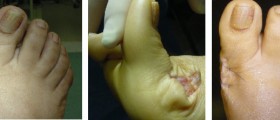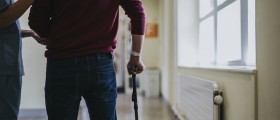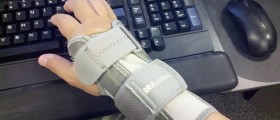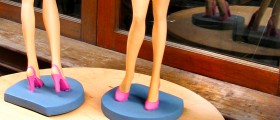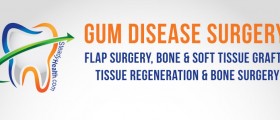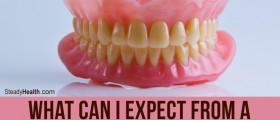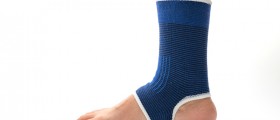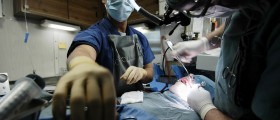I am 12 months post op from 4 level acdf.My questions are will I ever feel my right arm or leg again? Will the pain that runs through my shoulders and across my back ever subside or at least become tollerant? and finally will the body spasms which keep me up all night ever go away or at least become controlloable with skelaxin?
Loading...
DONT DO IT , MY HUSBAND DID IT AND WE BOTH REGRET DOING IT,. ITS BEEN A YEAR AND HE IS STILL IN ALOT OF PAIN !! TILL THIS VERY DAY.ON PAIN KILLERS . WE REGERET TRUSTING THAT DR.!! AND WE DONT KNOW WHAT TO DO NOW.. MY SUGGESTION IS GO FOR NATURAL PROCEDURE TO CORRECT IT.
PLEASE DONT DO IT.
PLEASE DONT DO IT.
Loading...
Sherry-- I am going through something very simulair as you, right now. Im a 40 yr old female w/ scoliosis, cervical spinal stenosis, w/ two bulging disc c4-5 c5-6. Severe neck pain, stiffness, lots of cracking noises. Anyways-- as much of this lonnnng process is a pain in the ass (neck) I would get a 2nd opinion. Surgery should always be the very last resolution. I also work on the Neuro Unit at a very big hospital in a main big city. Our Chief Dr of Neuro is in the top 10 of Neuro Surgeons in the U.S. I trust & respect his opinion, but yet would get a 2nd even 3rd just for peace of mind. So, basically-- you can have the best Neuro Surgeon ever & still follow up and educate yourself on all the possibilities.
The post following you hit the nail on the head.. Horror stories. Neck Support, driving and twisting your body to check blind spots, and excercize are all too familiar...
And w me, Im just doing PT to help prevent ppain & flare ups. Yoga & stress reduction therapy. Counseling too. Whatever is a positive can't hurt.
The post following you hit the nail on the head.. Horror stories. Neck Support, driving and twisting your body to check blind spots, and excercize are all too familiar...
And w me, Im just doing PT to help prevent ppain & flare ups. Yoga & stress reduction therapy. Counseling too. Whatever is a positive can't hurt.
Loading...
i just had this done Nov 4th, i used a cadaver bone, how long does it take for movement to return in neck?
Loading...
I am also in AZ, new to the area and I'm scheduled for this surgery nov 6 with Dr Willis a AZ spine. I'm Aldo going to have him do my carpel tunnel at same time. I'm scared and worried but he assured me I could go back to work light duty in 2-3 weeks?? What is your take?? It's disectomy of 6-7 with cadaver bone n titanium plates
Loading...
This is over a year late, but I felt inclined to share in case you still needed it or someone else comes across it... I have to currently take trips to the metroplex here in Texas (Dallas-Fort-Worth) which means 2.5 hours one way without traffic or inclement weather, and usually becomes an all day 'adventure'.
For the tldr, so to bottom.
2 years ago, that would have just meant 1-2 breaks for each leg of the journey to test my arm from a previous injury/surgery. However, in March of 2015, I had started to see Dr's for serious back/neck/shoulder pain and intense burning in my arms and hands anyone i coughed, sneezed, etc. was diagnosed with stenosis all up and down my neck and back (mostly in cervical and lower lumbar), disc herniations between c3-c6 and in my last two lumbar discs,and lastly with pinching of the nerve roots in my neck leading to my shoulders, arms, hands, and digits.
i had the ACDF (anterior/front cervical discectomy fusion) for c4-c6...
long story short, I'm still in intense pain, sometimes even with the meds (pain meds + ibuprofen + muscle relaxer) and i still have to make that journey 2-3 times a month for medicine, checkups, and some migraine therapy.
what had worked best for me is:
- taking breaks while driving before it gets bad
- taking my medicine just before the drive so it kicks in around when the pain starts to escalate.
- bringing the 8-hour ice packs with me (got one of the t-shaped ones for neck/shoulders, and 2 medium rectangle ones for my lumbar and thoracic). i bring one for the initial drive, and have 1 or 2 small ice chests with the blue-flat-square lunch ice things and one or 2 sets of the same kinds of ice packs for my neck/back.
- picking up a fat, comfy, breathable neck pillow that attaches to the bars between headrest and back of seat - necessary for keeping the ice pack on your neck and supporting it so the headrest doesn't wear on your neck faster...
- a pillow or seat insert to absorb the bumps and jumps a little bit (also good for lumbar)
- a lumbar and/or a thoracic support mesh for seat
- picked up a 400 watt power inverter so that i could plug heating pads into my car. also got a cheap ext cord with 3 slots.
- lastly, pick up some special heating pads - a wrapping neck+shoulder pad and 1 or 2 soft, fuzzy, and comfortable large "full-back" pad(s) and plug them into your inverter. obviously for europeans, you would need an adaptor instead of an inverter because America uses alternating current for homes and DC for car batteries.
They make my 5-7 hour journey 2-3x/month much me feasible and i don't have to rely on family to drive me...
For home (esp leading up to an after surgery) i used a machine that you put ice and water in. it then runs cold/icee water thru tubes in a flat pad that was on my neck and back. i bought a 5$ metal rack with casters (tiny wheels) normally used for a computer. i attached that blue rope (used to hold stuff down in your truck) to the metal 'dolley'. After surgery, i couldn't lift more than 5-10 lbs, so i got tons of bags of ice with familial help. we then split the ice into 5-8 lb bags and labeled them. we dumped them in our large freezer so it was easy for me to rotate by myself. i would pull it to the door and dump the warm water outdide by tipping it over. then bring to the kitchen, dump the ice in that i could lift. then poured water in with a marked tea container (had the blue lid that you can close). i had marks inside to know when to stop. then i crashed it back to my reading place and hooked it back up to the pad and to the power and relax. couldn't feel my back because i kept it cold (no freeze burn, though), and it did wonders... was counting down the minutes until my next dose because the pain was blinding and nauseating, and without this contraption, i don't know what i'd've done because the medicine didn't last long nor help as much as i'd've liked.
TLDR;
my successful 5-7 hr road trips 2-3 times/month involves the following recipe:
- really long lasting ice packs,
- backup packs in ice chest(s),
- neck support pillow,
- thoracic/lumbar mesh support,
- car seat pillow,
- power inverter (US) or power adapter (non-US),
- ext cord (2-3 outlets),
- specialized heating pads,
- and plenty of breaks to stretch/rest/walk-around/etc
For the tldr, so to bottom.
2 years ago, that would have just meant 1-2 breaks for each leg of the journey to test my arm from a previous injury/surgery. However, in March of 2015, I had started to see Dr's for serious back/neck/shoulder pain and intense burning in my arms and hands anyone i coughed, sneezed, etc. was diagnosed with stenosis all up and down my neck and back (mostly in cervical and lower lumbar), disc herniations between c3-c6 and in my last two lumbar discs,and lastly with pinching of the nerve roots in my neck leading to my shoulders, arms, hands, and digits.
i had the ACDF (anterior/front cervical discectomy fusion) for c4-c6...
long story short, I'm still in intense pain, sometimes even with the meds (pain meds + ibuprofen + muscle relaxer) and i still have to make that journey 2-3 times a month for medicine, checkups, and some migraine therapy.
what had worked best for me is:
- taking breaks while driving before it gets bad
- taking my medicine just before the drive so it kicks in around when the pain starts to escalate.
- bringing the 8-hour ice packs with me (got one of the t-shaped ones for neck/shoulders, and 2 medium rectangle ones for my lumbar and thoracic). i bring one for the initial drive, and have 1 or 2 small ice chests with the blue-flat-square lunch ice things and one or 2 sets of the same kinds of ice packs for my neck/back.
- picking up a fat, comfy, breathable neck pillow that attaches to the bars between headrest and back of seat - necessary for keeping the ice pack on your neck and supporting it so the headrest doesn't wear on your neck faster...
- a pillow or seat insert to absorb the bumps and jumps a little bit (also good for lumbar)
- a lumbar and/or a thoracic support mesh for seat
- picked up a 400 watt power inverter so that i could plug heating pads into my car. also got a cheap ext cord with 3 slots.
- lastly, pick up some special heating pads - a wrapping neck+shoulder pad and 1 or 2 soft, fuzzy, and comfortable large "full-back" pad(s) and plug them into your inverter. obviously for europeans, you would need an adaptor instead of an inverter because America uses alternating current for homes and DC for car batteries.
They make my 5-7 hour journey 2-3x/month much me feasible and i don't have to rely on family to drive me...
For home (esp leading up to an after surgery) i used a machine that you put ice and water in. it then runs cold/icee water thru tubes in a flat pad that was on my neck and back. i bought a 5$ metal rack with casters (tiny wheels) normally used for a computer. i attached that blue rope (used to hold stuff down in your truck) to the metal 'dolley'. After surgery, i couldn't lift more than 5-10 lbs, so i got tons of bags of ice with familial help. we then split the ice into 5-8 lb bags and labeled them. we dumped them in our large freezer so it was easy for me to rotate by myself. i would pull it to the door and dump the warm water outdide by tipping it over. then bring to the kitchen, dump the ice in that i could lift. then poured water in with a marked tea container (had the blue lid that you can close). i had marks inside to know when to stop. then i crashed it back to my reading place and hooked it back up to the pad and to the power and relax. couldn't feel my back because i kept it cold (no freeze burn, though), and it did wonders... was counting down the minutes until my next dose because the pain was blinding and nauseating, and without this contraption, i don't know what i'd've done because the medicine didn't last long nor help as much as i'd've liked.
TLDR;
my successful 5-7 hr road trips 2-3 times/month involves the following recipe:
- really long lasting ice packs,
- backup packs in ice chest(s),
- neck support pillow,
- thoracic/lumbar mesh support,
- car seat pillow,
- power inverter (US) or power adapter (non-US),
- ext cord (2-3 outlets),
- specialized heating pads,
- and plenty of breaks to stretch/rest/walk-around/etc
Loading...



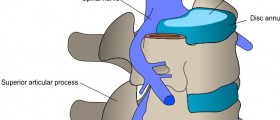
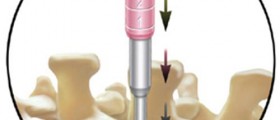

-Causes,-Symptoms,-Diagnosis,-Treatment_f_280x120.jpg)
